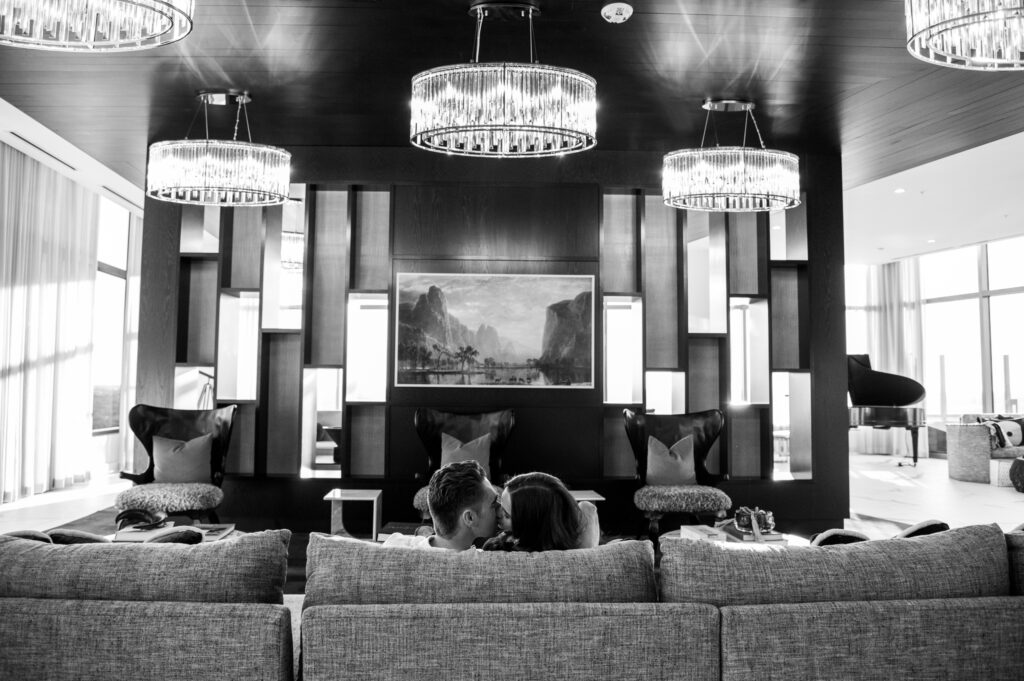Share this post
AUTHOR:
Editing the Same Photo Two or Three Times Before It Feels Done: Why Perfectionism Can Be a Problem for Photographers
July 2, 2025

As photographers, we often find ourselves chasing perfection. It’s common to edit the same photo multiple times before it finally feels “done.” While striving for perfection can push your skills forward, it can also become a problem that slows your workflow, drains your energy, and even stifles creativity. In this post, we’ll explore why perfectionism in photo editing can hold you back and how to manage it effectively to improve your productivity and artistic satisfaction.
Here are the 10 key points we’ll cover:
- Understanding Perfectionism in Photography
- The Impact of Perfectionism on Workflow
- Recognizing When a Photo Is Truly Finished
- Techniques to Overcome Perfection Paralysis
- Setting Realistic Standards for Perfection
- Balancing Perfectionism with Client Expectations
- Using Feedback to Improve Without Over-Editing
- Time Management Strategies to Combat Perfectionism
- The Role of Confidence in Achieving Perfection
- Embracing Imperfection to Enhance Creativity

Understanding Perfectionism in Photography
Perfectionism in photography is both a creative drive and a potential pitfall. It often stems from the belief that every photo needs to meet an impossibly high standard in order to be worth sharing or delivering. While this can motivate photographers to improve, it can also keep you stuck in endless cycles of self-doubt and second-guessing. Many photographers don’t realize how much time they’re spending chasing tiny changes that offer little real impact. When you understand perfectionism as a mindset rather than a trait, it becomes easier to address and manage.
What Perfectionism Means for Photographers
For photographers, perfectionism shows up as obsessing over small details no one else notices. This could mean retouching the same area multiple times or constantly comparing your work to others online. It often feels like a noble pursuit, but it can mask a fear of criticism or failure. Recognizing the emotional triggers behind perfectionism can help you reframe how you view “finished” work.
How Perfectionism Can Improve and Hinder Your Work
Yes, perfectionism can lead to technical growth but it comes at a cost. While it might make you detail-oriented and precise, it can also delay projects, lead to burnout, and reduce your joy in the process. When left unchecked, it stops being a growth tool and becomes a roadblock. Learning where it helps and where it hurts is essential to managing it well.
The Impact of Perfectionism on Workflow
Perfectionism can quietly take over your workflow without you realizing it. You may think you’re just being thorough, but if you’re re-editing the same gallery for the third time, something bigger might be going on. This constant cycle eats into your ability to meet deadlines, book new clients, and maintain your creative energy. The longer it takes to complete projects, the more stressed and behind you feel. Efficiency and perfection don’t have to be enemies but they do need balance.
How Perfectionism Slows Down Editing Workflow
Every time you reopen Lightroom to “just fix one more thing,” you interrupt your flow and delay delivery. You lose precious hours that could be used for marketing, rest, or booking new clients. While you might feel like you’re refining the work, often you’re just going in circles. Knowing when to stop is a skill that saves time and mental bandwidth.
Improving Workflow by Setting Editing Limits
Try giving yourself time caps, like 15 minutes per image or three total passes per gallery. These constraints challenge you to make confident decisions and move forward. Set up checkpoints to evaluate progress rather than waiting for some vague sense of “perfection.” These limits can create space for growth in other areas of your business.
Recognizing When a Photo Is Truly Finished
One of the hardest skills in photography is knowing when to stop editing. When perfectionism clouds your judgment, it becomes difficult to trust your instincts. But the truth is, many photos are finished long before we stop working on them. Developing an internal checklist or using objective markers can help you gain clarity. Mastering this awareness helps you build confidence and save time.
Signs That Your Photo Has Reached Perfection
Look for visual cues: are the tones consistent, is the subject clear, and does it align with your usual style? If so, you’re likely done. If you’re unsure, compare it to past work you were proud of. Often, “finished” doesn’t mean flawless, it means complete and consistent.
Improving Decision-Making to Stop Over-Editing
Decision fatigue is real. When you give yourself too many options, it’s hard to make a final call. Practice trusting your first instinct or setting editing goals in advance. The more confident you are in your style, the easier it becomes to move on.

Techniques to Overcome Perfection Paralysis
When you’re frozen in indecision, you’re not improving, you’re just stuck. Perfection paralysis can leave you staring at the same image for hours, unsure how to move forward. Building structure into your editing process helps reduce the overwhelm. You don’t need to reinvent your workflow with every session. Instead, lean on techniques that streamline your process while still honoring your creativity.
Using Presets and Templates to Improve Consistency
Presets aren’t cheating, they’re tools for consistency and speed. When you start from a preset that reflects your brand, you reduce the temptation to endlessly tweak. This also creates a more cohesive gallery, which clients love. Build your own preset packs based on editing decisions you often repeat.
Improving Focus with Breaks and Fresh Eyes
Step away from your screen. Even a 10-minute break can reset your perception and show you the photo in a new light. Coming back with fresh eyes often reveals that the image was already “done.” Regular breaks can lead to sharper decisions and better edits.
Setting Realistic Standards for Perfection
What counts as “perfect” for one photographer may not apply to another. That’s why setting your own clear standards is so helpful, it prevents comparison and guides decision-making. When you know what your best work looks like, you stop chasing a moving target. These standards give your editing process structure and confidence. Over time, they become part of your visual brand.
Defining What Perfection Means for Your Brand
Think about your favorite edits. What do they have in common? Use that information to define perfection for yourself. Maybe it’s true-to-life skin tones, balanced contrast, or a soft matte finish. Having a clear benchmark keeps you from spiraling into endless changes.
Improving Client Satisfaction with Clear Standards
When your edits are consistent, your clients know what to expect and that makes them feel safe investing in you. Meeting your own well-defined standard builds trust. This also helps you set realistic delivery timelines and manage feedback more effectively.
Balancing Perfectionism with Client Expectations
Your idea of perfect might not be the same as your client’s and that’s okay. What they’re looking for is clarity, consistency, and confidence in your work. Perfectionism can create delays or confusion if you don’t keep communication open. The better you understand and align with your client’s expectations, the smoother the experience will be. Sometimes, “done” is about satisfying the brief, not creating a portfolio piece.
Communicating Editing Process to Improve Transparency
Walk clients through your editing philosophy during onboarding or in your welcome guide. If you use a signature look or limited retouching, let them know early. Transparency builds trust and reduces unrealistic expectations.
Improving Client Relationships by Setting Boundaries
Set clear revision limits in your contract like one round of adjustments for color or exposure. Boundaries protect your time and make the client experience more structured. This also helps weed out perfection-driven back-and-forth that doesn’t add value.
Using Feedback to Improve Without Over-Editing
Not all feedback is created equal. When you’re perfection-prone, even neutral comments can feel like a personal critique. But learning how to seek and apply feedback without spiraling is a superpower. It helps you improve faster and make targeted changes instead of editing everything for no clear reason. The key is to focus on constructive, actionable insights. We could help give you great tips with our Master Lightroom Editing.
Seeking Constructive Criticism to Improve Skills
Ask for feedback from peers or mentors who understand your goals. Frame your request clearly: “Does the lighting work?” or “Do these colors feel consistent?” This keeps feedback focused and prevents overwhelm.
Improving Editing Efficiency with Targeted Feedback
Use feedback as a guidepost, not a to-do list. Focus on common themes across critiques instead of trying to fix every single suggestion. This lets you improve in strategic ways without burning out.
Time Management Strategies to Combat Perfectionism
Time management isn’t just about doing more, it’s about doing the right things within healthy boundaries. When perfectionism creeps in, it can hijack your schedule and leave you feeling unproductive. By setting time blocks, batching tasks, and prioritizing essential edits, you protect your mental energy. These structures help you stay focused and avoid burnout.
Allocating Time Blocks to Improve Editing Discipline
Try editing in 60–90 minute blocks with breaks in between. This helps you maintain focus without losing hours to obsessive tweaking. Use timers or productivity apps to track and stick to these blocks. Timeboxing brings structure and clarity.
Improving Productivity with Prioritized Editing Tasks
Instead of treating every image equally, start with must-haves: hero shots, key moments, or social-ready images. Batch similar tasks, like skin retouching or color grading, to save time. Prioritizing helps perfectionism take a back seat to purpose.
The Role of Confidence in Achieving Perfection
Confidence is the antidote to perfectionism. When you believe in your skills, you’re less likely to second-guess every choice. Building confidence doesn’t mean being cocky, it means trusting your eye and owning your style. The more you practice delivering “done” work, the easier it gets. Confidence builds momentum, and momentum leads to mastery. Look at this article on how to stay consistent: How to Achieve a Consistent and Clean Photo Editing Style.
Building Confidence to Reduce Over-Editing
Every time you call a photo “done,” you reinforce your ability to make decisions. Confidence grows with repetition and results. Celebrate the wins, even if small, they’re proof that you’re capable without obsessing over every detail.
Improving Self-Assessment Skills for Better Editing
Practice evaluating your work critically but kindly. Compare it to your past projects, not someone else’s highlight reel. Ask yourself: Is this photo emotionally strong? Is the message clear? These questions help guide your editing with purpose instead of anxiety.

Embracing Imperfection to Enhance Creativity
Imperfection is often where the magic happens. Some of your most emotionally resonant work might be technically “flawed” but that’s what gives it soul. When you embrace imperfection, you give yourself room to experiment, evolve, and express. Creativity thrives in freedom, not fear. Letting go of the need for flawless work opens the door to authentic storytelling.
How Imperfection Can Improve Artistic Expression
Photos that are slightly off-center, a bit grainy, or emotionally raw can be more powerful than pristine ones. These imperfections often reflect real life and real life connects with viewers. Stop editing out all the quirks that make your work personal.
Improving Your Unique Style by Accepting Imperfections
Imperfections help you define your style. Over time, the “flaws” you keep may become your signature. Your work doesn’t need to be perfect to be powerful, it just needs to be true to you.

Perfectionism can feel like a badge of honor, but more often, it’s a weight that holds photographers back. Learning to identify when a photo is “good enough” isn’t settling, it’s a strategic move toward freedom and sustainability. Letting go of the need to constantly re-edit allows you to deliver faster, create more consistently, and preserve your creative energy for work that truly matters. The most impactful photographers aren’t perfect, they’re present, intentional, and confident in their process. You don’t need to edit something three times for it to be worth something. Sometimes, once is enough.
Perfectionism is a double-edged sword for photographers: it can improve your skills but also stall your progress. By understanding how to manage perfectionism, setting realistic standards, using feedback wisely, and embracing imperfection, you can improve your workflow, creativity, and client satisfaction.
If you’re ready to improve your editing process and overcome perfection paralysis, start by setting clear editing limits and seeking constructive feedback. For more tips on improving your photography business and creative process, explore booking a 6 month mentorship with us!

Comments